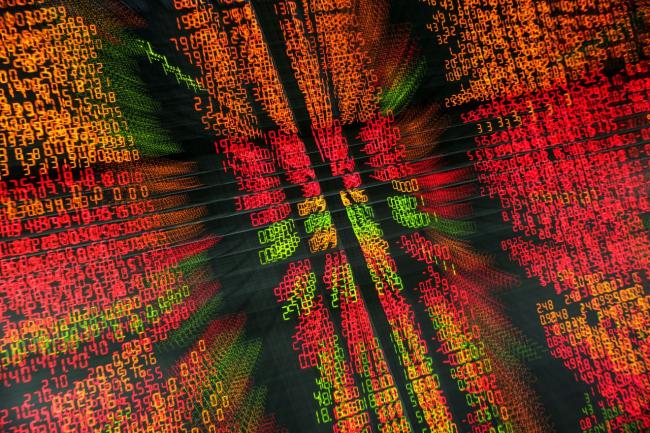(Bloomberg) -- Quantitative strategists say bets on the most tranquil stocks in Asia leave plenty to be worried about, just as the safety trade gathers steam in other parts of the world.
Shares that have demonstrated little sensitivity to broader market swings in the past tend to perform better when the market expects turbulence ahead -- and global investors have been fans of the strategy this year. But the MSCI Asia ex-Japan Minimum Volatility Index, a gauge of the calmest equities in the region, has fallen more than 5% in the past six months, compared with a gain of over 6% for a measure tracking the same strategy for global stocks.
“Ironically, low risk is a bit risky,” said Chris Ma, head of Asia quantitative research at Citigroup Inc (NYSE:C)., citing rapid shifts in investor confidence this year. Because stocks in the cohort generally receive positive ratings from analysts and are less likely to be sold short by hedge funds, the trade is more at risk of drawdowns than almost any other, he said. Only strategies targeting growth stocks are more susceptible, the bank estimates.
In a month that some strategists are already dubbing “vol-tober” for its frequent market reversals, global investors have loaded up on safety trades to shield themselves in anticipation of a looming correction. Low-volatility exchange-traded funds have already amassed nearly $100 billion in assets in the U.S. and Europe, according to Bloomberg Intelligence.
But flavors of the strategy targeting Asia, by contrast, have struggled to strike a chord with traders. BlackRock Inc (NYSE:BLK).’s iShares unit liquidated an ETF tracking low-volatility shares in the region in August. On the other hand, its equivalent fund for the U.S. has received $12.2 billion this year, the biggest inflows of any such product in the country. BlackRock didn’t respond to a request for comment about the low-volatility ETF closure.
Part of the reason the strategy may perform differently in Asia reflects expectations of smoother markets than in the U.S., where some investors expect more turbulence ahead.
“I wouldn’t see these volatility strategies as a particular focus for us right now,” said Paul Sandhu, head of multi-assets quant solutions and client advisory for Asia-Pacific at BNP Paribas (PA:BNPP) Asset Management in Hong Kong. In the U.S., they’re much more interesting, he added. “I do see volatility rising in the U.S., and more or less being benign here.”
The absence of a liquid derivatives market in Asia to trade some of the biggest markets, such as China, also doesn’t help, Sandhu said.
Read more about how equity havens cost more than ever, right when investors need them most
What’s more, the stocks making up the low-volatility basket tend to change over time to reflect those that exhibited low correlation with the market in the past -- and they don’t always remain so stable when turbulence erupts. In MSCI’s minimum-volatility index for Asia ex-Japan, those shares are currently weighted toward financial services, according to a fact sheet.
Shifts in the composition of baskets can be partly why analysts change their recommendations. That’s one of the reasons that pushed Sanford C. Bernstein to advise shorting the global momentum factor in August, before it blew up a few weeks later.
The fear factor driving many global investors in search of the low-volatility trade this year is that traditional cross-asset class hedges, such as holding both stocks and bonds, may only go so far to protect portfolios if a recession materializes, said Olivier d’Assier, head of applied research for Asia-Pacific at Qontigo.
“If that hedge doesn’t work any more, then people need to start selling,” he said. The fourth quarter is often a time when such selling takes place, he added.
(Updates penultimate paragraph to reflect Axioma rebranding to Qontigo.)
